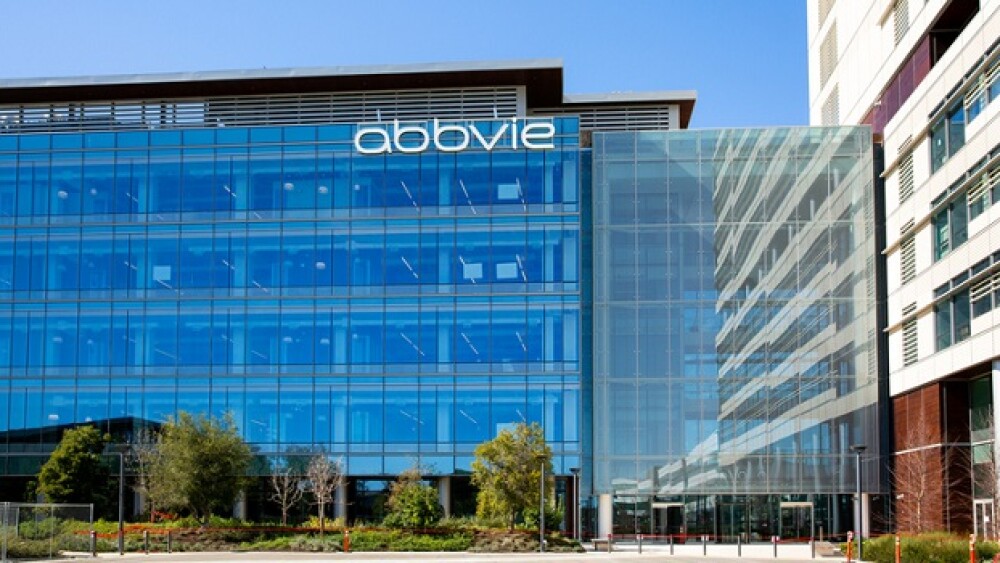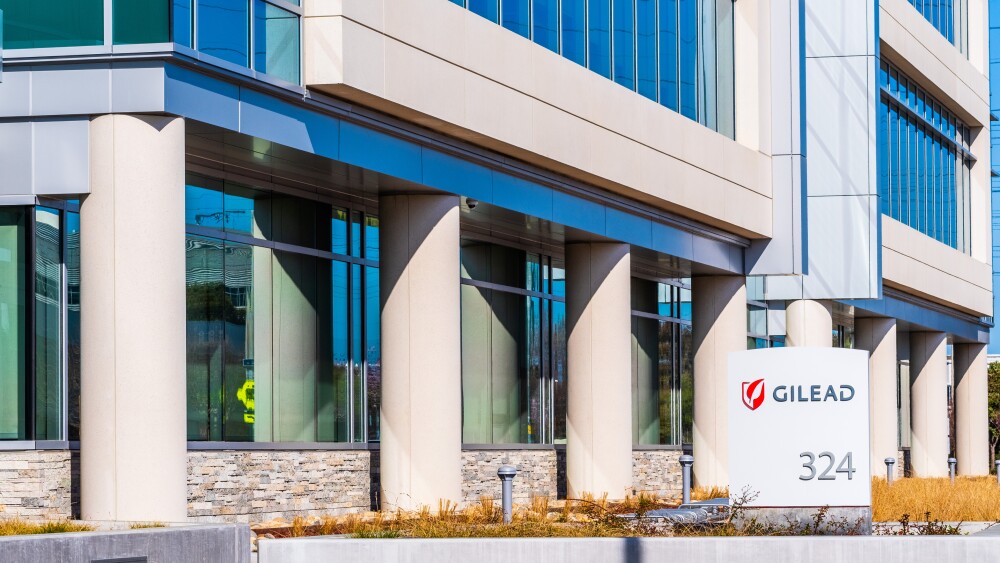SUNNYVALE, Calif., May 1, 2015 /PRNewswire/ -- Pharmacyclics, Inc. (the "Company") (NASDAQ: PCYC) today reported financial results for the quarter ended March 31, 2015, as well as general business updates. Due to the pending merger with AbbVie Inc., no conference call will be held.
Key Highlights
- Total revenue for the quarter ended March 31, 2015 increased to $206 million from $119 million for the quarter ended March 31, 2014.
- Worldwide IMBRUVICA® (ibrutinib) net product revenue of $247 million was earned for the quarter ended March 31, 2015, including $58 million of total ex-U.S. product revenue as per the calculation of outside US (ex-U.S.) pre-tax profits and losses by our partner Janssen Biotech, Inc. and its affiliates (Janssen) under the worldwide collaboration and license agreement (Agreement).
- The quarter ended March 31, 2015 was the first quarter in which the Company achieved an ex-U.S. pre-tax commercial profit under the Agreement. Net alliance revenue of $13 million represents the Company's 50% share of ex-U.S. pre-tax commercial profit under the Agreement, which is calculated as ex-U.S. IMBRUVICA net product revenue, less ex-U.S. cost of goods sold, ex-U.S. distribution expenses and ex-U.S. commercialization expenses, as allowed under the Agreement.
- The quarter ended March 31, 2015 represents the third profitable quarter under the Agreement.
- On March 4, 2015, Pharmacyclics entered into an agreement and plan of reorganization to merge with AbbVie Inc., as a wholly-owned subsidiary.
- IMBRUVICA received regular (full) approval by the U.S. Food and Drug Administration (FDA) in all lines of therapy for patients with Waldenstrom's macroglobulinemia (WM) on January 29, 2015. IMBRUVICA is the first and only approved treatment for WM patients.
- IMBRUVICA is now approved in a total of 47 countries.
- Two clinical trials investigating the combination of ibrutinib and a checkpoint inhibitor were initiated during the first quarter, PCYC-1135 in solid tumors and LYM-1002 in hematological malignancies.
"We completed the first quarter on an upbeat revenue note. That momentum continues into the second quarter. We are super pleased with our non-GAAP profitability and we are very pleased with the ex-U.S. performance delivered by our partner Janssen. Janssen has accomplished an amazing feat in achieving ex-U.S. profitability within one quarter of their launch," said Bob Duggan CEO and Chairman of the Board of Pharmacyclics. "Our breakthrough research efforts are favorably impacting our clinical trials. We are now actively enrolling patients across multiple solid tumor trials. Once again ahead of schedule in terms of both initiating trials as well as enrollment."
Financial Results for the Quarter Ended March 31, 2015
Revenue
U.S. net product revenue for the first quarter of 2015 was $189 million, compared to $56 million for the quarter ended March 31, 2014.
Total revenue for the quarter ended March 31, 2015 increased to $206 million from $119 million for the quarter ended March 31, 2014, primarily due to a $133 million increase in IMBRUVICA net product revenue and a $13 million increase in alliance revenue, net, partially offset by a $60 million decrease in milestone revenue under the Agreement.
GAAP and Non-GAAP net income
Non-GAAP net income for the quarter ended March 31, 2015 was $34 million, or $0.43 per diluted share, compared to non-GAAP net income of $31 million, or $0.40 per diluted share for the quarter ended March 31, 2014.
See "Use of Non-GAAP Financial Measures" below for a description of the Company's Non-GAAP Financial Measures. Reconciliation between certain GAAP and Non-GAAP measures is provided at the end of this press release.
GAAP net income for the quarter ended March 31, 2015 was $4 million, or $0.05 per diluted share, compared to GAAP net income of $18 million or $0.23 per diluted share for the quarter ended March 31, 2014.
Pre-Tax Profit (Loss) Under the Agreement
On a worldwide basis, the Company's share of IMBRUVICA-related pre-tax profit (loss) under the Agreement was calculated as follows:
Three Months Ended | |||
Mar. 31, | Mar. 31, | ||
$ in thousands | 2015 | 2014 | |
50% of Pharmacyclics' U.S. product revenue, net | $ 94,579 | $ 28,090 | |
Less: 50% of Pharmacyclics' U.S. cost of goods sold | (8,351) | (3,055) | |
Pharmacyclics' share of U.S. net product revenue less cost of goods sold | 86,228 | 25,035 | |
Less: Pharmacyclics' share of U.S. commercial expenses under the Agreement | (15,083) | (14,593) | |
Pharmacyclics' share of U.S. pre-tax profits from the commercialization of IMBRUVICA under the Agreement | 71,145 | 10,442 | |
Add: Pharmacyclics' share of ex-U.S. pre-tax commercial profit (loss) under the Agreement (1) | 12,525 | (3,572) | |
Pharmacyclics' share of worldwide pre-tax profits from the commercialization of IMBRUVICA under the Agreement | 83,670 | 6,870 | |
Less: Pharmacyclics' share of worldwide R&D expenses under the Agreement | (27,332) | (24,402) | |
Total pre-tax profit (loss) under the Agreement | $ 56,338 | $ (17,532) | |
(1) For the three months ended March 31, 2015, the Company's share of ex-U.S. pre-tax commercial profit under the Agreement was classified as Alliance Revenue, net in the condensed consolidated statements of operations. For the three months ended March 31, 2014, the Company's share of ex-U.S. pre-tax commercial loss under the Agreement was classified within selling, general and administrative expenses in the condensed consolidated statements of operations. |
As of March 31, 2015, total Excess Amounts were $139.2 million, which was comprised of the cumulative amount funded by Janssen to date of $134.3 million and interest of $4.9 million. Under the Agreement, Excess Amounts will become payable to Janssen, together with interest, in calendar quarters subsequent to the three months ended March 31, 2015, which represented the Company's third profitable quarter for the collaboration. Excess Amounts are expected to become payable in subsequent quarters of profitability for the collaboration until the Excess Amounts and applicable interest has been fully repaid.
GAAP and Non-GAAP costs and expenses
Non-GAAP R&D expenses of $39 million for the quarter ended March 31, 2015 increased by $9 million, compared to $30 million for the quarter ended March 31, 2014. Non-GAAP SG&A expenses of $31 million for the quarter ended March 31, 2015 increased by $3 million, compared to $28 million for the quarter ended March 31, 2014. Reconciliation between certain GAAP and Non-GAAP measures is provided at the end of this press release.
GAAP R&D expenses of $49 million for the quarter ended March 31, 2015 increased by $14 million, compared to $35 million for the quarter ended March 31, 2014. GAAP SG&A expenses of $50 million increased by $15 million, compared to $35 million for the quarter ended March 31, 2014.
Company Update
On March 4, 2015, Pharmacyclics entered into an agreement and plan of reorganization, valued at approximately $21 billion, including consideration for stock options and restricted stock units, whereby Pharmacyclics will merge with and into a wholly-owned subsidiary of AbbVie Inc. The transaction is expected to close in the second quarter of 2015.
Regulatory Update
Our regulatory team, in collaboration with Janssen, continues to make significant progress in the global rollout of IMBRUVICA. IMBRUVICA is now approved in 47 countries.
On January 29, 2015 the FDA granted full approval for the use of IMBRUVICA across all lines of treatment for patients with WM, a rare, indolent form of blood cancer. This is the fourth approval for IMBRUVICA in less than 15 months and represents a significant milestone for WM patients as it is the first and only drug approved for this rare blood cancer.
Ibrutinib received FDA Breakthrough Therapy Designation for this indication in February 2013. In the United States, approximately 1,500 people are diagnosed each year with WM, the prevalence is approximately 12,000. In the G7 countries the incidence is estimated at 6,000 and the prevalence is estimated at 23,000.
On March 16, 2015 the Company announced that an Independent Data Monitoring Committee reviewed and assessed the HELIOS (CLL3001) study, an international, Phase III, randomized, double-blind, placebo-controlled trial evaluating ibrutinib in combination with bendamustine and rituximab (BR) versus placebo in combination with BR in patients with relapsed or refractory (R/R) chronic lymphocytic leukemia (CLL) or small lymphocytic lymphoma (SLL), and unanimously recommended that the study be un-blinded based on clinically meaningful and statistically significant treatment benefit in the ibrutinib arm. The study has met its primary endpoint, demonstrating a statistically significant improvement in progression-free survival (PFS). These data were submitted to the upcoming 2015 American Society of Clinical Oncology (ASCO) Annual Meeting to be held May 29-June 2, 2015 in Chicago, IL.
Clinical Update
Ongoing exploration of the potential of ibrutinib continued in the first quarter of 2015. In January, a Phase I/IIa study was initiated investigating the combination of ibrutinib and Bristol Myers Squibb's nivolumab, a PD-1 checkpoint inhibitor (anti-PD-1 antibody), in R/R patients with high-risk CLL (del17p or 11q), follicular lymphoma (FL), or diffuse large B-cell lymphoma (DLBCL).
Also in February the Company announced the completion of longer-term toxicology studies with its investigational Bruton's tyrosine kinase (BTK) inhibitor in rheumatoid arthritis. Additional pre-clinical work is required before moving into Phase II.
Additionally, on April 1, 2015, PCYC-1135-CA, a multi-center study investigating the use of ibrutinib in combination with AstraZeneca's anti-PD-L1 checkpoint inhibitor MEDI4736 was initiated. The Phase Ib/II study will examine the safety, tolerability and effectiveness of this investigational combination in patients with R/R non-small cell lung cancer (NSCLC), breast cancer, and pancreatic cancer. Our first solid tumor trial, a third-party sponsored study investigating ibrutinib as a single agent in patients with R/R epidermal growth factor receptor mutant NSCLC who have failed a tyrosine kinase inhibitor, is now enrolling.
Ibrutinib clinical trials are active in all regions including the United States, Europe, Asia Pacific, Asia, and Latin America. Currently, 62 ibrutinib clinical trials are registered on www.clinicaltrials.gov, of which 13 are Phase III trials. To date, over 6,100 patients have been treated in Company-sponsored trials conducted in over 35 countries involving more than 800 investigators. As these trials complete enrollment, approximately 8,800 patients will have participated.
Over the last quarter, Pharmacyclics initiated three Company-sponsored Phase II trials and three medical research center-sponsored Phase II trials. The late-stage ibrutinib program is expanding rapidly with eight current Phase III trials in CLL, two Phase III trials in mantle cell lymphoma (MCL), one Phase III trial in DLBCL, one Phase III trial in FL/MZL, and one Phase III trial in WM.
Pre-clinical Update
In February 2015, pre-clinical data were published in the Proceedings of the National Academy of Sciences, providing a compelling scientific rationale for the continued study of ibrutinib in combination with a checkpoint inhibitor (anti-PD-L1 antibody). These data showed that when ibrutinib was combined with an anti-PD-L1 checkpoint inhibitor, suppression of tumor growth was enhanced suggesting a greater response might be achieved when treating certain hematologic cancers and solid tumors with the combination.
The combination of an anti-PD-L1 checkpoint inhibitor and ibrutinib resulted in suppression of tumor growth and extension of survival in a mouse model of lymphoma. The study found while some of the mice responded to anti-PD-L1 treatment alone, the response eventually diminished over time. When ibrutinib was added to anti-PD-L1 treatment, half of the mice were cured and the other half experienced delays of tumor growth and prolonged survival. The research was led by Ronald Levy, M.D., a professor of medicine and Director of the Lymphoma Program at Stanford University School of Medicine.
The researchers also chose two solid tumor models to investigate the novel combination triple negative breast cancer and colon cancer, which do not express BTK and have low levels of the PD-L1 protein. When ibrutinib and the PD-L1 checkpoint inhibitor were given as single agents neither had any effect on tumor growth. However, the combination reduced the size of the primary tumors, improved survival, and resulted in fewer metastases in both breast and colon cancer. Specifically, in the case of the colon cancer tumor model, approximately 30% of the mice were cured.
Most importantly, the researchers tested whether the mice cured of colon cancer had developed long-term immune memory, specific memory T cells, from the novel combination. These mice were re-exposed to colon cancer cells 90 days post cure and, after seven days of tumor growth, all the mice cleared the tumor by Day 17 without any additional dosing of the ibrutinib and PD-L1 combination.
This research provides the scientific rationale for the study of ibrutinib in combination with checkpoint inhibitors in solid tumors via the recently-commenced PCYC-1135 study investigating non-small-cell lung, breast and pancreatic cancers.
Publications and Congresses
Since the beginning of the year there were 27 published manuscripts in peer-review journals that support the utility of ibrutinib in its approved indications and provide scientific rationale for many future uses. Three notable publications provided particularly meaningful clinical insight into single-agent ibrutinib.
- The Lancet Oncology noted that treatment with single-agent ibrutinib in treatment-naive and previously treated high risk patients with CLL resulted in a significant overall response rate (ORR), with 92% of high-risk CLL patients with deletion 17p (del 17p) or tumor protein 53 (TP53 aberrations) achieving an objective response. These high-risk patients typically do not respond well to standard therapies. Mohammed Farooqui, D.O., staff clinician at the National Heart, Lung and Blood Institute at the National Institutes of Health, served as the lead author of the paper and highlighted the encouraging results given the high relapse rate for del17p patients and those with the TP53 aberrations.
- Blood published three-year follow up data in treatment-naive and previously treated patients with CLL and SLL receiving single-agent ibrutinib showed that the therapy was associated with durable responses. The manuscript's lead author John Byrd, M.D., Director of the Division of Hematology, Department of Internal Medicine at The Ohio State University and colleagues also noted that toxicity for these patients diminished over time for certain adverse events. The researchers concluded that the data provide evidence that ibrutinib effectively controls CLL disease progression and that the therapy is well tolerated for longer periods of time. These data were presented in part at the 2014 ASCO Annual Meeting.
- The New England Journal of Medicine published longer-term data from a Phase II investigator-initiated study showing that WM patients treated with single-agent ibrutinib experienced sustained disease control with an ORR of 91% after a median of 19.1 months of treatment and a two-year overall survival (OS) rate of 95%. Steven Treon. M.D., Ph.D., Director of the Bing Center for Waldenstrom's macroglobulinemia, Dana-Farber Cancer Institute and Associate Professor at Harvard Medical School, noted how remarkable the results were considering that many of these patients had received an average of two prior therapies.
In addition to the aforementioned publication by Levy et al in the Proceedings of the National Academy of Science, another notable publication also highlighted the therapeutic potential of ibrutinib as a combination therapy:
- Blood published data by Jennifer Brown, M.D., Ph.D., Director of the CLL Center within the Division of Hematologic Malignancies at Dana-Farber Cancer Institute, and colleagues highlighting that when ibrutinib was added to chemoimmunotherapy (CIT), the combination was associated with a high degree of clinical activity compared to treatment with CIT alone. The objective response rate with ibrutinib was 93.3%, including 16.7% complete responses initially, which increased to 40% during an extension period. The addition of ibrutinib was not associated with any additive toxicities. Ibrutinib was found to be well tolerated when administered in combination with the CIT regimen rituximab and bendamustine in previously treated CLL and SLL patients.
In 2015, we have also provided updates on several of our clinical, non-clinical and pre-clinical ibrutinib programs at various scientific conferences including, The American Society for Blood and Marrow Transplantation's (BMT) Tandem Meeting in San Diego, CA from February 11-15, 2015 and the Annual American Association of Cancer Research (AACR) Meeting in Philadelphia, PA from April 18-22, 2015. As a whole, these data further advance and support the clinical development plan for ibrutinib both as a single agent and as part of novel investigational combinations designed to improve the treatment of patients with liquid and solid tumors. Select data presented at two notable meetings are highlighted below:
In an oral session at the BMT Tandem Meeting, David B. Miklos, M.D., Ph.D., Medical Director of the Blood and Marrow Transplantation-Cellular Therapy Facility at the Stanford University Medical Center and Assistant Professor of Medicine at Stanford University, presented data showing ibrutinib was associated with an 88% overall response rate in 16 patients with R/R high-risk CLL who had experienced a median of five prior therapies. The median time on study was 23.3 months and the estimated median PFS at 24 months was 76.6%. All patients had previously undergone allogeneic stem cell transplant (allo-HCT), a procedure in which stem cells from one person are transplanted to another. This procedure is typically performed in high-risk CLL patients to restore healthy blood cells that have been damaged by disease or high doses of chemotherapy treatment. Patients who experience a relapse of CLL following allo-HCT often are difficult to treat with chemotherapy because they do not produce enough blood cells or develop post-transplant complications, such as infections or Graft versus Host Disease (GvHD), a life-threatening condition in which newly transplanted cells attack the patient's body.
In a presentation at the AACR Meeting, investigator Laura Soucek, Ph.D., Vall d'Hebron Institute of Oncology (VHIO), Edifici Mediterrania, Hospital Vall d'Hebron, Barcelona, Spain, presented pre-clinical data which suggest that ibrutinib may be an effective therapeutic option for pancreatic ductal adenocarcinoma (PDAC) and was associated with potent anti-fibrotic activity and longer survival , as shown in both a transgenic mouse model and an in-vivo model of patient-derived xenograft (PDX) mice (grafts of tissue taken from a pancreatic cancer patient and grafted into a mouse). These results were published in the April 15th edition of Cancer Research.
In addition, an oral presentation by Steven Coutre, M.D., Professor of Medicine, Stanford University School of Medicine, at the AACR Meeting featured a data analysis from the Phase I/IIb PCYC-1102 study and the ongoing PCYC-1103 extension study in treatment-naive (TN) and R/R patients (median of four prior therapies) with CLL or SLL. The data demonstrated that patients who received ibrutinib 420 mg experienced a 91% (n=94) overall response rate and that 14% of all patients achieved a complete response to ibrutinib treatment. The median duration of response (DOR) and PFS were not yet reached and the estimated 30-month PFS rate was 96% in TN and 76% in R/R CLL patients with only one patient with previously untreated CLL experiencing disease progression during the follow-up.
Ibrutinib Selected Clinical Trials
Chronic Lymphocytic Leukemia/Small Lymphocytic Lymphoma (CLL/SLL)
- RESONATE (PCYC-1112): Phase III trial of ibrutinib versus ofatumumab in patients with R/R CLL/SLL was initiated in the first quarter of 2012. This was a randomized, multi-center, open-label Phase III trial of ibrutinib administered as monotherapy. This 391-patient study met its primary endpoint of PFS, as well as a key secondary endpoint of OS at the pre-planned interim analysis in January 2014. This trial confirmed ibrutinib's clinical benefit in CLL patients who have received one prior therapy, resulting in regular (full) FDA approval for this indication on July 28, 2014.
- RESONATE-17 (PCYC-1117): Open-label, single-arm, Phase II trial of ibrutinib as a single agent in patients with CLL who have deletion of chromosome 17p and who did not respond to or relapsed after at least one prior treatment (a high unmet need population) was initiated in the first quarter of 2013. The primary endpoint of the trial is ORR. This trial completed enrollment of 111 patients worldwide in the third quarter of 2013. Data were presented at the 56th Annual American Society of Hematology Meeting on December 9, 2014.
- RESONATE-2 (PCYC-1115): Phase III trial of ibrutinib versus chlorambucil in newly diagnosed elderly CLL/SLL patients was initiated in the first quarter of 2013. This is a randomized, multi-center, open-label trial of ibrutinib as a monotherapy versus chlorambucil in patients 65 years or older with treatment naive CLL/SLL. The study design was agreed upon with the FDA under a Special Protocol Assessment (SPA). The primary objective of this trial is to demonstrate a clinically significant improvement in PFS when compared to chlorambucil. This trial completed enrollment of 273 patients worldwide in the first quarter of 2014. A data read out is anticipated mid-year 2015.
- ILLUMINATE (PCYC-1130): Phase III trial of ibrutinib in combination with obinutuzumab versus chlorambucil in combination with obinutuzumab in newly diagnosed CLL/SLL patients was initiated in the fourth quarter of 2014. This is a randomized, multi-center, open-label trial in patients 18 years or older with treatment naive CLL/SLL. The primary objective of this trial is to demonstrate a clinically significant improvement in PFS when compared to chlorambucil plus obinutuzumab. The enrollment target of this study is 212 patients.
- HELIOS (CLL3001): Phase III trial of ibrutinib in combination with bendamustine and rituximab in patients with R/R CLL/SLL was initiated in the third quarter of 2012. This is a randomized, multi-center, double-blinded, placebo-controlled trial of ibrutinib in combination with bendamustine and rituximab (BR) versus placebo in combination with BR in R/R CLL/SLL patients who have received at least one line of prior therapy. The primary objective of the trial is to demonstrate a clinically significant improvement in PFS when compared to BR.
To read full press release, please click here.
Help employers find you! Check out all the jobs and post your resume.




